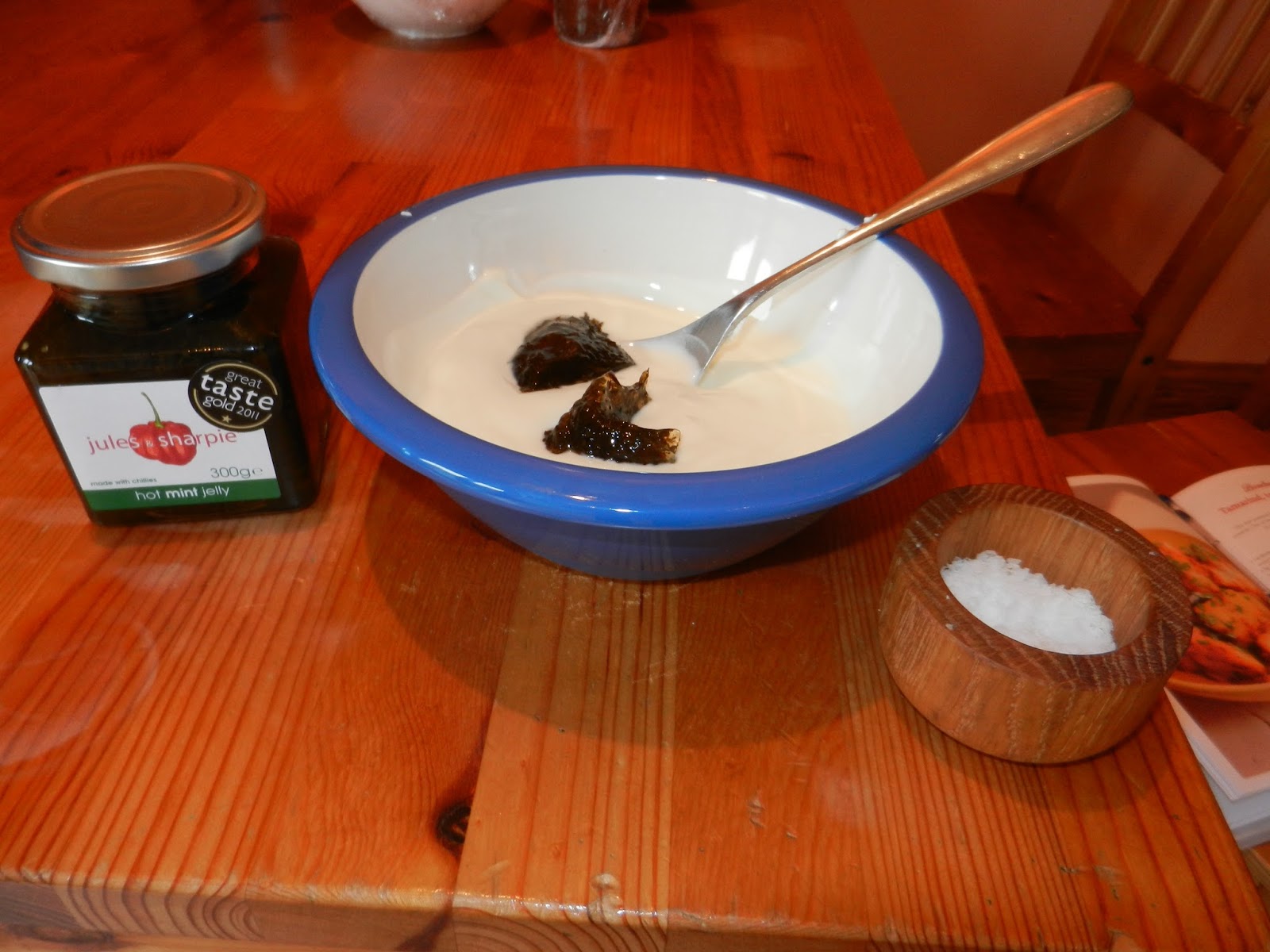There must be thousands of receipes for Tom Yam, and I am going to embark on some tests to find out which ones I like best.
You can seemingly make these as complex or simple as you like......I shall start with simple and move on from there!
Ingredients
For the paste:
4 garlic cloves
1 fat lemon grass stalk (or a pack of the ones from UK supermarket chains!)
1" piece galangal (or same root ginger)
Bunch of coriander - stems only (and roots if you have them on as well)
Chillies - birds eye - x3
2 shallots
Good splash lime juice (or juice from 2 limes)
1 tbsp palm sugar
1 tsp shrimp paste - try and get this from Thai supermarkets in the smallest sized volumes so you reduce wastage - it will keep in the fridge (seal the pot in a baggie as well!) for a while...
For the rest:
1.5L good chicken or vegetable stock. The Kallo organic stock cubes are good if used as directed: i.e. 1 cube per 500ml
Another fat lemon grass stalk (see above) very finely chopped
Chillies - birds eye - x2 or even 3 finely chopped
4cm piece root ginger, sliced into batons 1mm x 1mm
Fish Sauce (nam pla) - 3-4 tbsp plus to taste
Lime juice - 2-3 limes plus to taste
1tbsp palm sugar
Mushrooms - oyster if you can get them, otherwise a nice variety - mixed wild mushrooms are great - I used some foriesterre and some funky thai mushrooms
Prawns - big ones. lots. I like a good 8 per person - raw, peeled and defrosted if frozen
Bamboo shoots - these are great in the soup. I get these packaged simply from the thai supermarket, but they are available in mainstream supermarkets, although often jarred in oil - be sure to rinse them off
Spring Onions - 5 or 6, finely chopped
Coriander (the leafy bits left over from your paste), chopped roughly. Reserve a small sprinkle for serving
Method
First to make the paste.
Combine all the paste ingredients in a food processor and blend to a rough paste
Heat a saucepan and add paste. Stir around to ensure it doesn't stick, then add the stock.
Bring to the boil, then reduce to a simmer for 10 mins or so
Remove from heat, and then sieve into a bowl. Discard paste, rinse pan and return your stock to it.
Place back on heat and bring to a boil again. Skim off any froth and impurities from the top then reduce to simmer
Add the lemongrass, chilli, ginger, nam pla, lime juice and sugar and stir well
After about 2 mins, taste, and adjust nam pla, lime juice and sugar accordingly
Add the mushrooms (and any other veg if you aren't making this with prawns!)
Add the bamboo shoots
Finally, add the prawns. (and tomatoes - optional)
Once the prawns just start to turn pink, add the spring onions and most of the chopped coriander leaves.
Very fast, do a final taste, adjust lime, nam pla or sugar as required and serve, with a sprinkle of the reserved chopped coriander on top.
Enjoy!





































